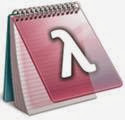One definition of a lambda, λ,
is the eleventh letter of the Greek alphabet and also has a value of
30 in the Greek numerical system. Another common usage is in
fraternity and sororities. Wikipedia gives at least twenty different
uses of the Lambda. Personally, the most awesome is the use of the
lambda is in calculus with the second greatest use of the Lambda
being in computer science. With the introduction of LINQ, lambda
usage has not only soared in code usage but the context is also easier to
understand.
Per
MSDN,
“A lambda expression is an anonymous function that you can use to
create delegates or expression tree types. By using lambda
expressions, you can write local functions that can be passed as
arguments or returned as the value of function calls.” To learn
more about delegates, go
here.
In .NET, the most basic lambda
expression can be recognized by its operator, “=>”, where
input parameters are on the left side of the operator and either an
expression or statement is on right side. For example, in the most
basic expression below, a parameter, “x” is passed in and the
returned result is the value of “x” squared:
EXAMPLE #1 – Basic Expression
Lambda :
//Simple Expression
Lambda:
delegate int del(int i);
public static void useDelegate()
{
del d = x => x * x;
int intParam = d(5);
Console.WriteLine(“intParam now has a value of {0}.”, intParam);
Console.ReadLine();
}
Result:
EXAMPLE #2 – Expression Lambda
with multiple parameters:
//Expression
Lambda returning a bool:
delegate bool del2(int i, string s);
public static void useTwoVariables()
{
del2 d = (int x, string s) => s.Length > x;
bool val = d(5, “ten”);
Console.WriteLine(“The bool value of the expression is : {0}”, val);
Console.ReadLine();
}
Result:
EXAMPLE #3 – Statement Lambda:
//Statement
Lambda using strings to create a message
delegate void CreateMessage(string s);
public static void useStrings()
{
CreateMessage cStr = x => { string s = x + ” “ + “is reigning MotoGP World Champion.”; Console.WriteLine(s); };
cStr(“Jorge Lorenzo, #99, “);
Console.ReadLine();
}
Result:
EXAMPLE #3 – Using Lambda on
Generics:
//Use the Query
Operator func on generic delegates
public delegate TResult Func<TArg0, TResult>(TArg0 arg0);
public static void useFunc()
{
int a = 15;
Func<int, int> func = x => x / x;
Console.WriteLine(“Result is {0}”, func(a));
Console.ReadLine();
}
Result:


